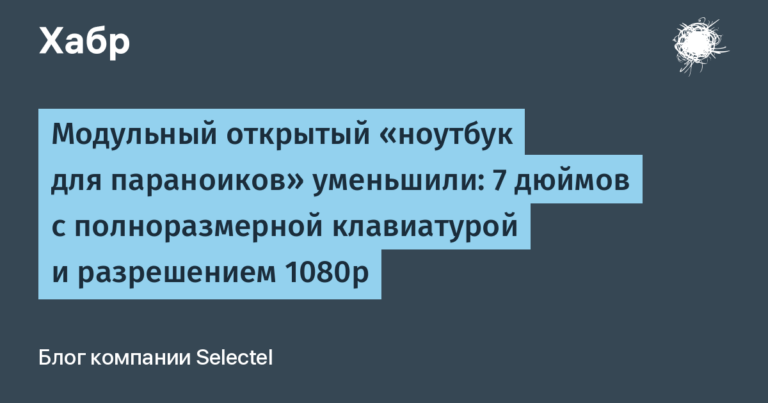Musical [гитарная] statistics
This article will focus on a statistical study of a large database of guitar compositions. If you are wondering what string most guitarists play, what note is the most popular and other similar questions, you are welcome.
Perhaps this work is the most extensive study of guitar compositions. The total duration of the analyzed tablature was more than 304 days of continuous sounding of music.
What is tablature
Tablature is a method of recording guitar compositions that does not require familiarity with musical notation. Instead of a musical staff, the tablature displays the lines of the guitar strings, on which there are numbers corresponding to the numbers of the frets played.
To visualize the statistics, I generated several csv files. Not every visualization includes top results for a simple reason: the difference between them and subsequent ones is so great that the visualization loses value. For the convenience of studying the materials, all graphs are interactive. You can download the csv file by clicking on the “Get the data” link.
Frequency of use
The most frequently used string was 4, followed by 5, 3, 6, and only at the very end already 2, 1 and 7.
Values are presented in numerical form, as otherwise the graph would be ordered inconsistently. Note sequence: do, do#, re, re#, mi, fa, fa#, salt, salt#, la, la#, si.
The most common note is si, followed before and after that by la. Notes with sharps are the least popular, the only exception is F, which is less popular than F sharp.
Here we consider the frequency, but not for the entire work, but for each individual instrument of the work. The difference with the previous chart is insignificant – you can see that the C note is knocked forward, otherwise the top 3 lags behind (remains?) similar. They are also followed by the note E. The least popular notes also kept their positions.
This graph shows the frequency of use MIDI notes. To convert them to the values that were used in the past charts, you need to get the remainder of division by 12 (the number of notes in an octave). For example, the most commonly used MIDI note #45 corresponds to the note A of the first octave. This note corresponds to the open fifth string in standard tuning.
Melodic are consecutive musical intervals, roughly speaking, this is a solo. The most popular was the interval in unison, i.e. the repetition of the same note, so it was excluded.
Intervals of +-2 semitones are more popular than +-1, otherwise the decay is almost even. It is interesting to note that the solos move approximately evenly both up and down in frequency, no pronounced differences are observed.
They call harmonics musical intervalsthat are playing at the same time. We can call them chords. I have considered only intervals of two notes, since intervals of several notes form more complex combinations.
Due to the nature of the count, we have most of the values shifted to negative numbers, since the value was formed by a simple difference between two consecutive notes in a two-note chord. The most popular interval corresponds to the fifth, this is the most common chord in rock music.
This graph examines the frequency of use of various musical instruments. Values are represented by numbers, conforming to the General MIDI formatto see the sequence, otherwise they would be sorted in descending order.
The undisputed leader is an overdriven guitar, followed by a regular piano, and the next one is a bass guitar, almost on a par with a palm-mute guitar (muffled strings), acoustic guitar is slightly behind them.
It is important to note that in this graph, the octave numbers do not match their musical names, and you need to make an offset of -1, then the values will match.
Notes in standard tuning start high, peaking on the 5th string above the 3rd fret, as well as the entire 4th string, and less than half of the third string.
Values are presented as numbers in order to maintain consistency on the graph. Music durations 2/1, 1/1, 1/2, 1/4, 1/8, 1/16, 1/32 correspond to the values 0, 1, 2, 3, 4, 5, 6.
The most popular duration is one fourth. Followed by one sixteenth and followed by one second.
Among the pauses, one second is most popular, followed by one fourth and one sixteenth.
Loudnesses are represented by numerical values that correspond to dynamic shades ppp, pp, p, mp, mf, f, ff, fff. That is, starting from the quietest and ending with the loudest. The loudest notes were the most popular.
Guitar frets and tricks
guitar fret is the position on the string where you can clamp it. Regrettably, the most popular was the zero fret, by a huge margin, which is why it was removed from the chart. The most popular are the 2nd, 3rd, 5th, 7th frets. Except for the second one. These are the frets that are marked with dots on the fretboard.
Below are the statistics for each string separately:
The most popular are string muting effect and, in fact, the opposite of it, when the strings remain sound after being removed (most often used when “picking” the strings). Reception is next legatowhen a new sound is played from the guitar using only the left hand, without the right hand or a pick. Compared to these methods, the number of others is insignificant.
Statistics for each string separately:
Quantitative characteristics
The most popular duration is about 3.5 (or three and a half) minutes. The distribution is very close to normal, but there is a jump in the region of short durations. The explanation for this is very simple: some recordings are quite short, they do not contain the complete work, but only a popular part of it, and also some songs have a short duration.
There are tablature lengths of more than 10 minutes, but sometimes these are album compilations, i.e. several compositions at once in one tablature.
The most popular number of tracks/instruments is 4. Probably the most common set is 2 guitars, bass and drums. At the same time, tablature, in which only one instrument is used, is more popular than those in which more than 7 instruments.
The most common value is approximately 100 cycles and rolls off unevenly. At the same time, the peak values are at multiples of 8: 24, 16, 8. I think these are tablature, where one single part is recorded with a length of one or more riffs.
As often as possible, there are bars with an ode to a single note. This probably includes bars that are rests. The next peaks are in the region of 8 and 16 notes, which seems to correspond to a fully filled 4/4 measure, where each note has a duration of 1/8 or 1/16, respectively.
The most common number is 1, which includes any lead, most bass lines, and some rhythm guitar riffs. A value of 0 means pauses. Numbers of 2, 3, 4 and beyond are similar to chords that involve the corresponding number of strings.
Time signatures
The undisputed leader is 4, so this number was excluded from the chart. There are many reasons for this, firstly, this time signature is the default time signature, and secondly, the most simple and predictable music is in 4/4 time signature.
The situation is similar with the numerator, so the value equal to 4 is excluded. After that, 8 follows with a large margin, and the rest of the options are much inferior to it.
The leader is the proportion 1/1, for the same reasons as above. It was followed by the value 3/4, without deleting these values, it was difficult to consider the graph. The next leading sizes are 6/4 and 2/4.
My favorite chart: here we see an interesting distribution, the most popular tempo is 120 bpm, which is not surprising. This is the default tempo in tablature editors and most DAWs. But it is interesting how the values are located around – the largest peaks are in steps of 20 beats per minute, between which there are peaks in steps of 10 beats per minute, between them there are peaks in steps of 5 beats per minute. And these last peaks have a distribution similar to normal.
Conclusion
The code used to get the stats is part of the codebase for my opensource music editor, which is in early development: https://github.com/constcut/aurals
Link to archive csv files: https://github.com/constcut/aurals/blob/main/res/csv_stats.zip
Thank you all for your attention!
I care about your opinion
Our team is developing an application for analyzing the psycho-emotional state of a person by voice, your opinion is very important to us. We will be grateful if you pass questionnaire of 10 questions!
For those who sign up for pre-registration, we promise a modest but lifetime bonus! 🙂





